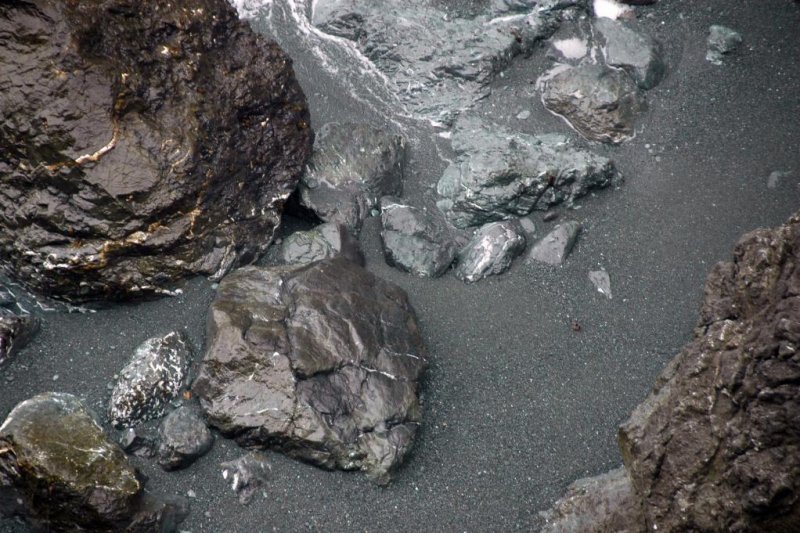
To better understand the movement and distribution of recycled crust in the mantle, researchers analyzed the ratios of certain minerals in mid ocean basalts. Photo by James St. John/Flickr
June 26 (UPI) -- New research suggests roughly 5 to 6 percent of the Earth's mantle is made up of recycled crust.
The discovery, detailed Friday in the journal Science Advances, suggests Earth has been producing new crust at a similar rate for most of the planet's history.
Geologists knew that some of Earth's crust regularly sinks back into the mantle, but until now, they weren't sure how much gets recycled -- a key to understanding the history of crustal formation and subduction.
To better understand the trajectory of crust that gets swallowed back into the mantle, scientists collected 500 samples of basalt from mid-ocean ridges all over the world.
RELATED Mars' magnetic field emerged earlier and lasted longer than previously thought
"The chemical composition of oceanic basalt -- Mid-Oceanic Ridge Basalt, or MORB -- that erupted along the 40,000-kilometer long oceanic ridge system is systematically depleted in elements -- termed incompatible elements -- that are concentrated in the continental crust: elements like potassium, thorium, uranium and lead," study co-author Munir Humayun told UPI in an email.
What has long perplexed scientists is that MORB comes in three flavors, each with different concentrations of incompatible elements.
"Normal MORB is depleted to an extent sufficient to explain extraction of the continental crust from the mantle, but there are basalts that are more depleted than Normal MORB (depleted-MORB) and basalts that are more enriched than Normal-MORB (enriched-MORB), and both are present in significant abundances," Humayun, a professor and geochemist at the Florida State University-headquartered National High Magnetic Field Laboratory, said.
RELATED Tectonic plates began shifting much earlier than geologists thought
Until now, researchers weren't sure what accounted for the differences in the amounts of incompatible elements found in basalt. Scientists surmised that recycled crust might help explain the formation of the three types of basalt.
"Recycled oceanic crust that melts at ridges produces melts that are lower in the ratio of the element germanium (Ge) to the element silicon (Si), two elements that are geochemically very similar in their behavior during melting," Humayun said.
"We developed a way of measuring small variations in the Ge/Si ratio and used this to show that enriched basalts have lower Ge/Si ratios consistent with the addition of melts from subducted recycled crust," he said.
RELATED Mantle, not core, may have produced Earth's earliest magnetic field
Researchers found that lower Ge/Si ratios were present in enriched basalts from all of the 30 different regions -- scattered across the globe -- from which the samples were sourced. This, they say, is evidence of a globally and historically consistent rate of crust recycling.
Many scientists have hypothesized that the crust that gets pulled back into the mantle sinks deep into the mantle's bottom layers and remains there -- with only small plumes floating back toward the upper mantle.
Others have estimated that recycled crust gets evenly distributed throughout the mantle, like a chocolate swirl in a vanilla cake -- the "marble cake" theory.
The latest findings support the latter theory. The findings have implications for the history of crustal formation and subduction.
"We were most surprised to confirm the theory of professor Alex Sobolev of the University of Grenoble that the mantle under ridges has an average of about 5 percent recycled crust," Humayun said.
"It could only have that much recycled crust if the vigor of subduction has been similar throughout most of Earth's history and that most of the recycled crust is not ponded in 'subduction graveyards' at the bottom of the mantle," he said.
upi.com/7017791
No comments:
Post a Comment